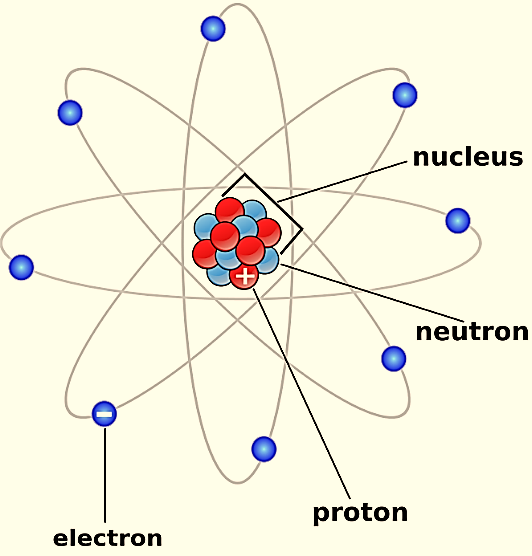
The atomic theory of matter was proposed by:
A. John Kennedy
B. Lavoisier
C. Proust
D. John Dalton
Answer
572.4k+ views
Hint: The atomic structure consists of Atomic particles. Atoms consist of three basic particles, protons, electrons, and neutrons. The nucleus (center) of an atom contains the protons (positively charged) and the neutrons (no charge). The outermost regions of the atom are called electron shells and they contain the electrons.
Complete step by step answer:
The atomic structure of an element refers to the constitution of its nucleus and the arrangement of the electrons around it. Primarily, the atomic structure of matter is made up of protons, electrons, and neutrons.
But, the atoms of different elements have different atomic structures because they contain different numbers of protons and electrons.
The first scientific theory of atomic structure was proposed by John Dalton in 1800s. The atomic structure is as shown

John Dalton suggested that all matter is made up of atoms, which were invisible and indestructible. He also stated that all the atoms of an element were the same, but the atoms of different elements differ in size and mass.
There were a few postulates of this theory:
1.Every matter is made up of atoms
2.Atoms are invisible
3.Specific elements have only one type of atom in them
4.Each atom has its constant mass that varies from element to element.
5.Atoms undergo rearrangement during a chemical reaction.
So, the correct option is D.
Note:Dalton's atomic theory is based on the law of conservation of mass and law of constant proportion. The Law of conservation of mass states that mass can neither be created nor be destroyed. In simpler terms, it says over the course of a reaction, the total mass of the reactants before the start of the reaction, is equivalent to the total mass of products at the end of the reaction. This law was proposed by Antoine L Lavoisier.
Complete step by step answer:
The atomic structure of an element refers to the constitution of its nucleus and the arrangement of the electrons around it. Primarily, the atomic structure of matter is made up of protons, electrons, and neutrons.
But, the atoms of different elements have different atomic structures because they contain different numbers of protons and electrons.
The first scientific theory of atomic structure was proposed by John Dalton in 1800s. The atomic structure is as shown

John Dalton suggested that all matter is made up of atoms, which were invisible and indestructible. He also stated that all the atoms of an element were the same, but the atoms of different elements differ in size and mass.
There were a few postulates of this theory:
1.Every matter is made up of atoms
2.Atoms are invisible
3.Specific elements have only one type of atom in them
4.Each atom has its constant mass that varies from element to element.
5.Atoms undergo rearrangement during a chemical reaction.
So, the correct option is D.
Note:Dalton's atomic theory is based on the law of conservation of mass and law of constant proportion. The Law of conservation of mass states that mass can neither be created nor be destroyed. In simpler terms, it says over the course of a reaction, the total mass of the reactants before the start of the reaction, is equivalent to the total mass of products at the end of the reaction. This law was proposed by Antoine L Lavoisier.
Recently Updated Pages
Master Class 11 Economics: Engaging Questions & Answers for Success

Master Class 11 English: Engaging Questions & Answers for Success

Master Class 11 Social Science: Engaging Questions & Answers for Success

Master Class 11 Biology: Engaging Questions & Answers for Success

Class 11 Question and Answer - Your Ultimate Solutions Guide

Master Class 11 Business Studies: Engaging Questions & Answers for Success

Trending doubts
10 examples of friction in our daily life

One Metric ton is equal to kg A 10000 B 1000 C 100 class 11 physics CBSE

Difference Between Prokaryotic Cells and Eukaryotic Cells

1 Quintal is equal to a 110 kg b 10 kg c 100kg d 1000 class 11 physics CBSE

State the laws of reflection of light

Explain zero factorial class 11 maths CBSE




